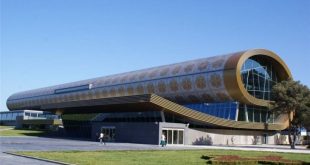Based on the support of Anastas Mikoyan, who became the chair of the Presidium of the Supreme Council of the USSR.( i.e. the president of the country ), and taking into account the successful transfer of the Crimea to the Ukraine in 1954, on 19 May 1963, 2,500 Armenians of the NKAA sent a petition to Nikita K hrushev. In it, they again raised the issue of the transfer of NKAA to Armenia or RSFSR (105). K hrushev refused to consider those demands and strict measures were undertaken against the initiators. Many of them were arrested and, if Armenian sources are to be believed, 18 of them were even killed (106).
The situation changed after the fall of K hrushev in October 1964 and Leonid Brezhnev‟s coming to power. For a start, the Armenians, with the help of the same Mikoyan, managed to receive a permit to conduct a 50th anniversary of the tragic events that took place in 1915 in Turkey. Since the end of 1964, the republican Mass Media had already begun an openly anti- Turkish campaign that immediately affected the joyless position of Azeris, even without that campaign in Armenia. The Karabakh issue was again raised in the press and an informal “Committee for Reuniting Armenia” even appeared which enjoyed the unconcea led support of the republican leadership. On the eve of the 50th anniversary, i.e. on 24 April 1965, that Committee promulgated its program in numerous leaflets and posters: to avenge the year 1915; to exile all Azeris from Armenia; to reunite the NKAA and the Nakhchevan ASSR with Armenia. The republican leadership made its modest contribution, starting a mass campaign to
discharge Azeris from responsible positions. As a result, only in one of 17 districts of Armenia populated by Azeris – Amasiy district- did an Azeri remain in the post of the first secretary. Armenians took their positions in all the rest of the posts. At the same time, more than 300 Azeri populated areas were renamed.
Soon, having realized that the situation was getting out of control and correspondingly clashes could be possible, from the beginning of April the army units began to be on duty in all Azeri quarters of Yerevan as well as in the Azeri villages of Armenia. Azeri schoolchildren and students did not attend classes. On 15 April, additional military units under the command of colonel M.Bazayev were introduced to Yerevan for the protection of the Azeri quarters. However, it was impossible to avoid attacks on Azeris and clashes between the military and Armenians occurred. O nly after that did Moscow react and restore order. But henceforth every year in late April – on the anniversary of the persecution of Armenians in Turkey–Azeri residential areas were protected by military units and militia. That, however, did not allow Azeris to avoid violence and insults in this volatile atmosphere.
 Oval Useful news from Azerbaijan and Caucasus
Oval Useful news from Azerbaijan and Caucasus
